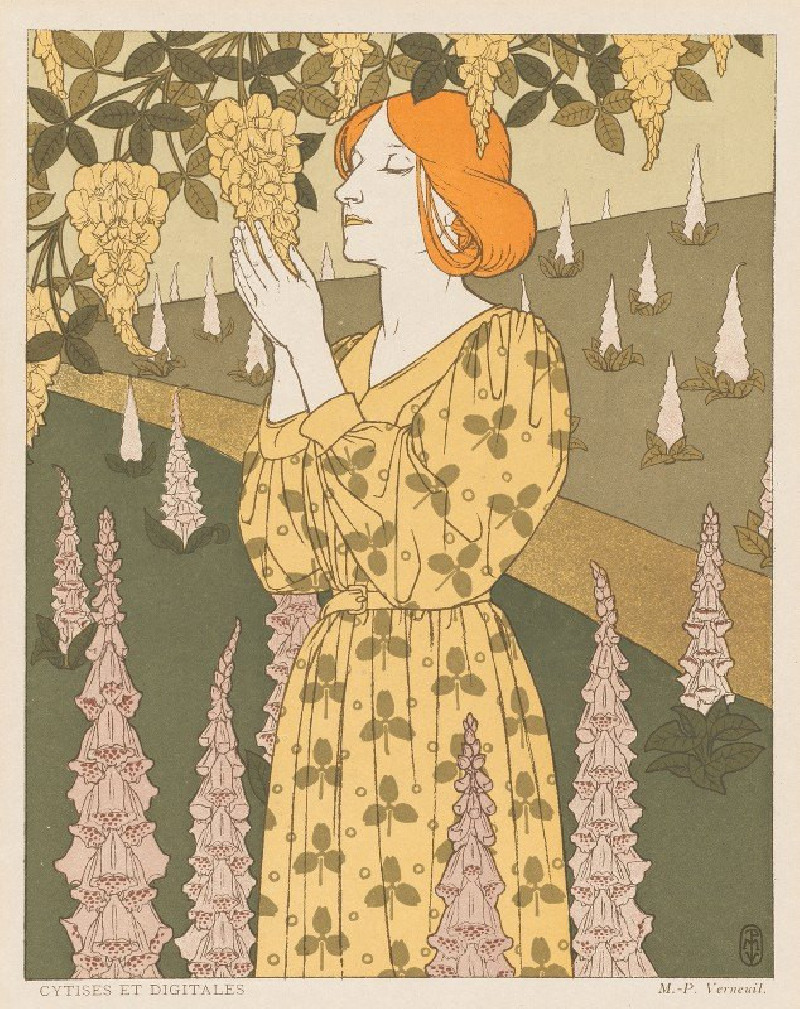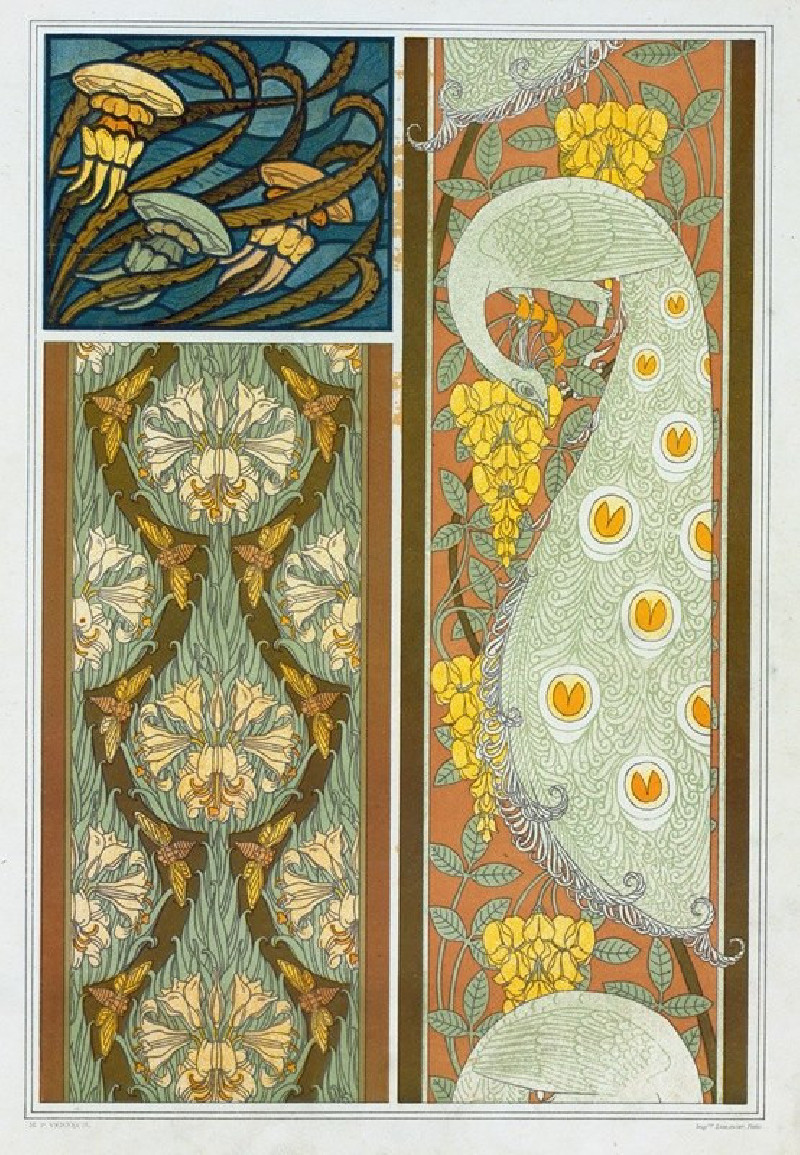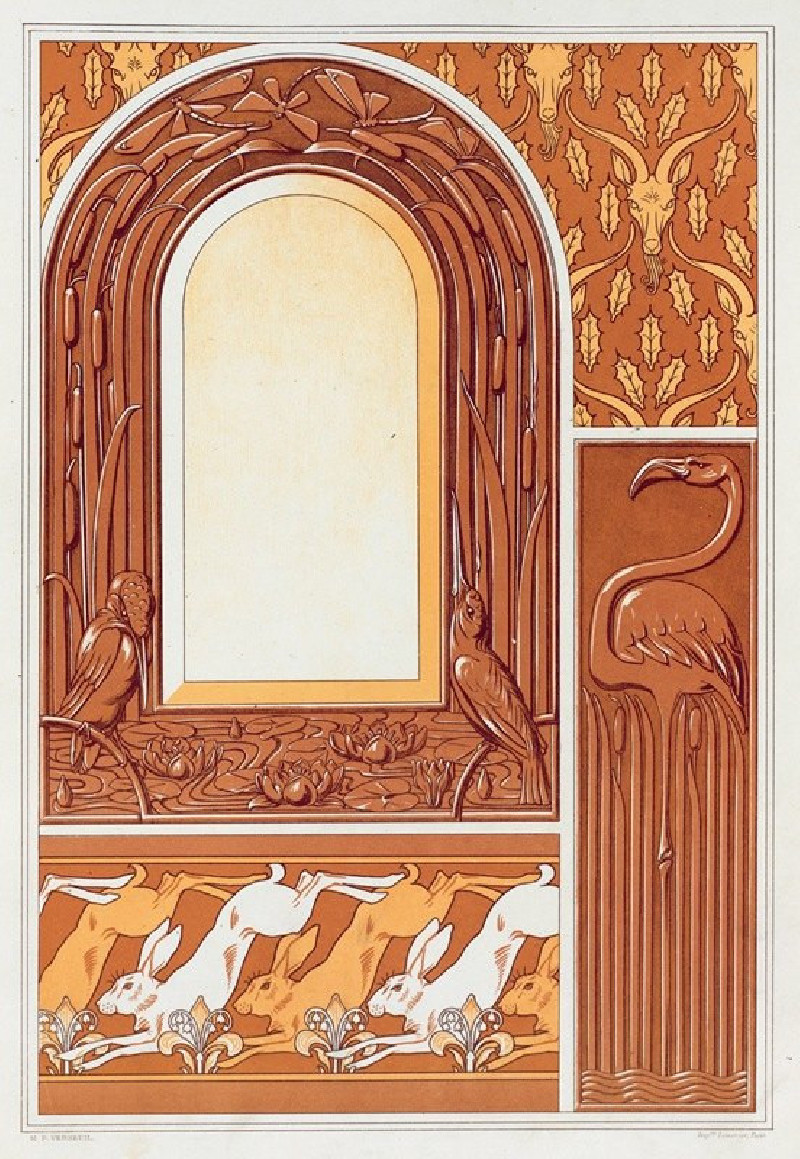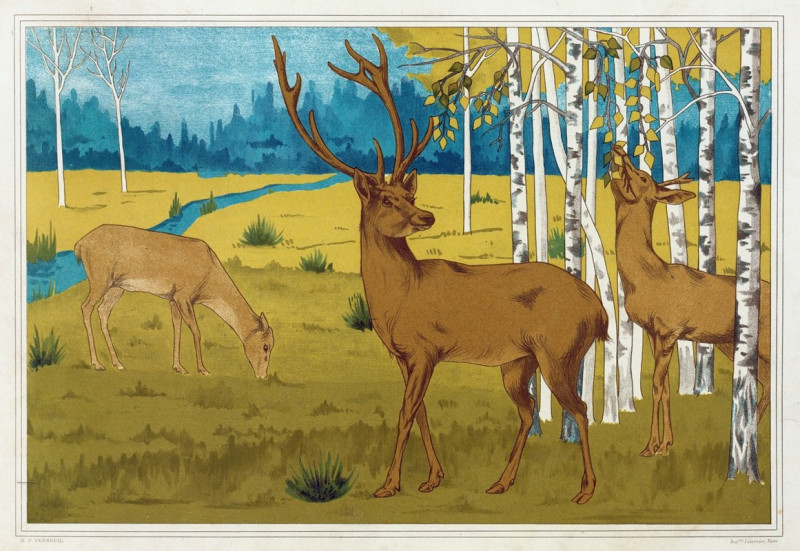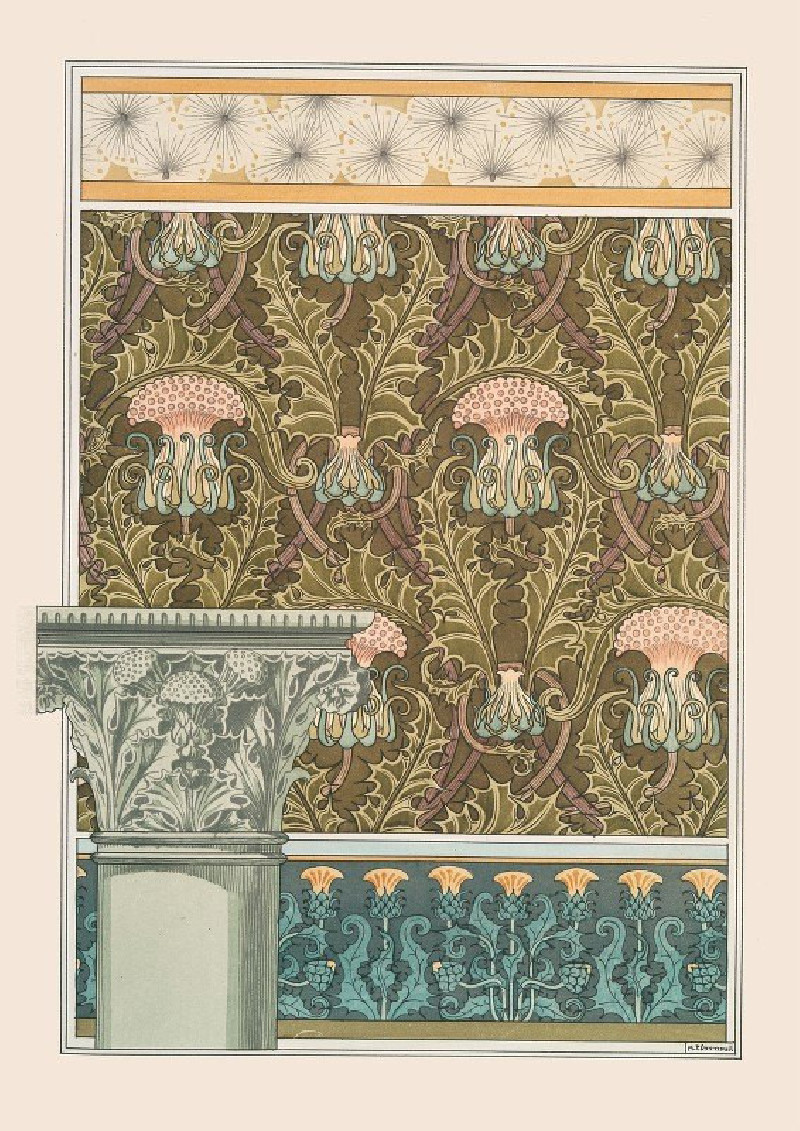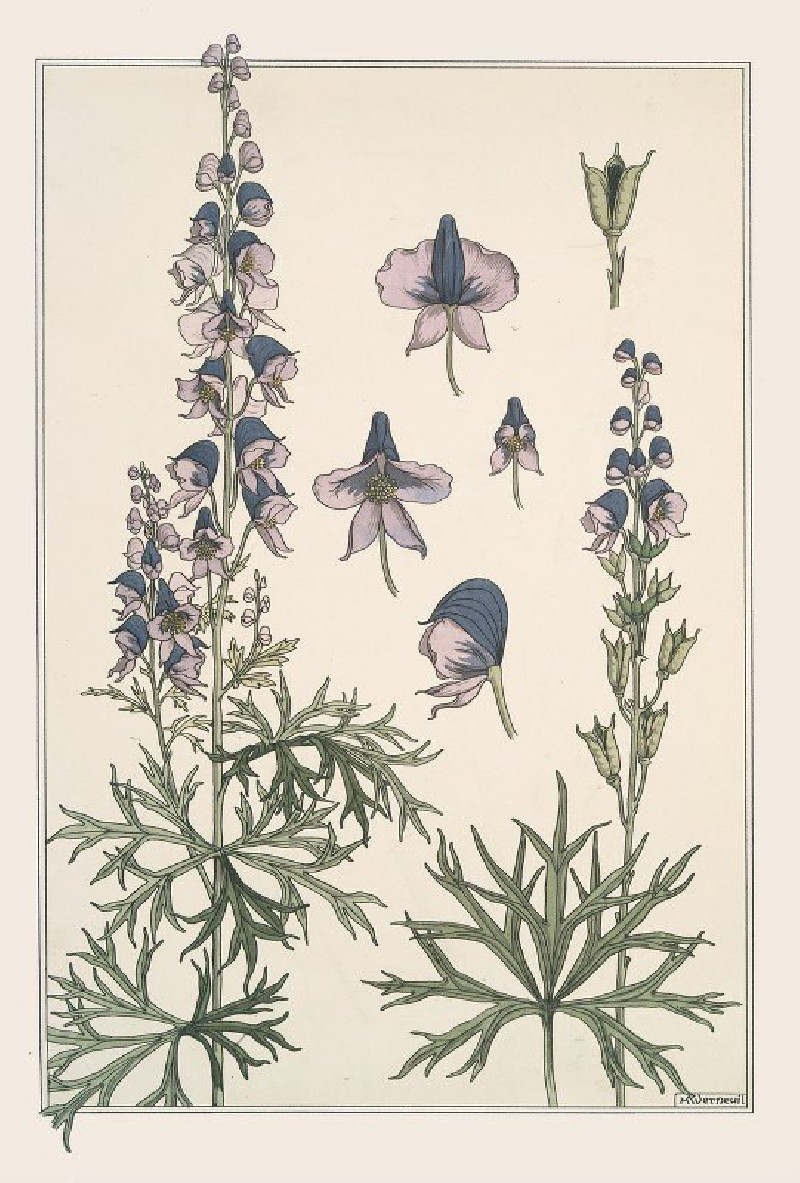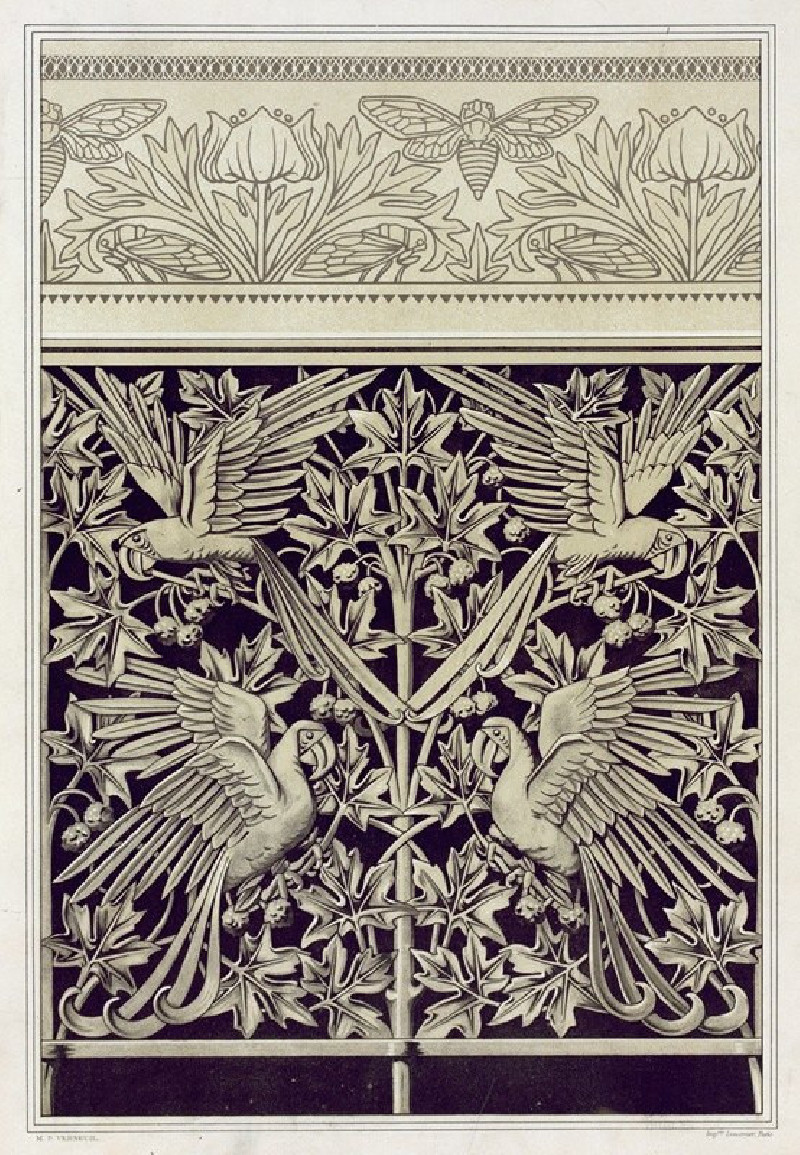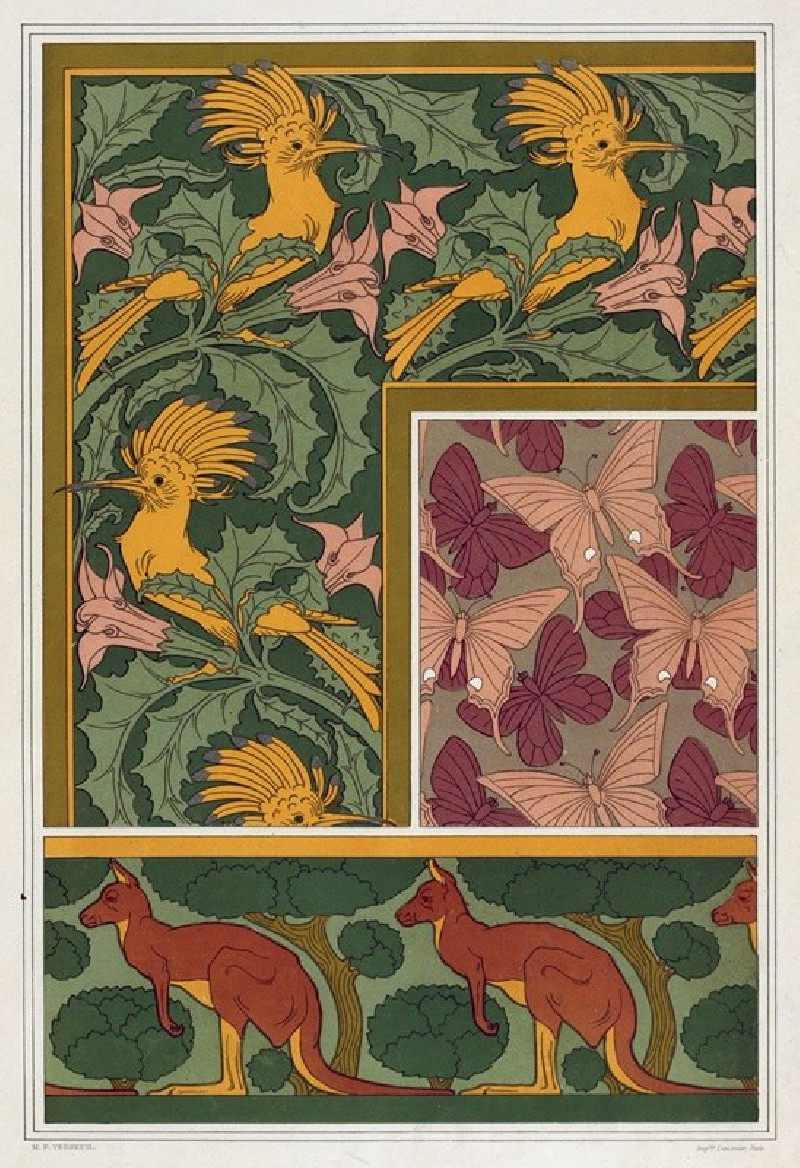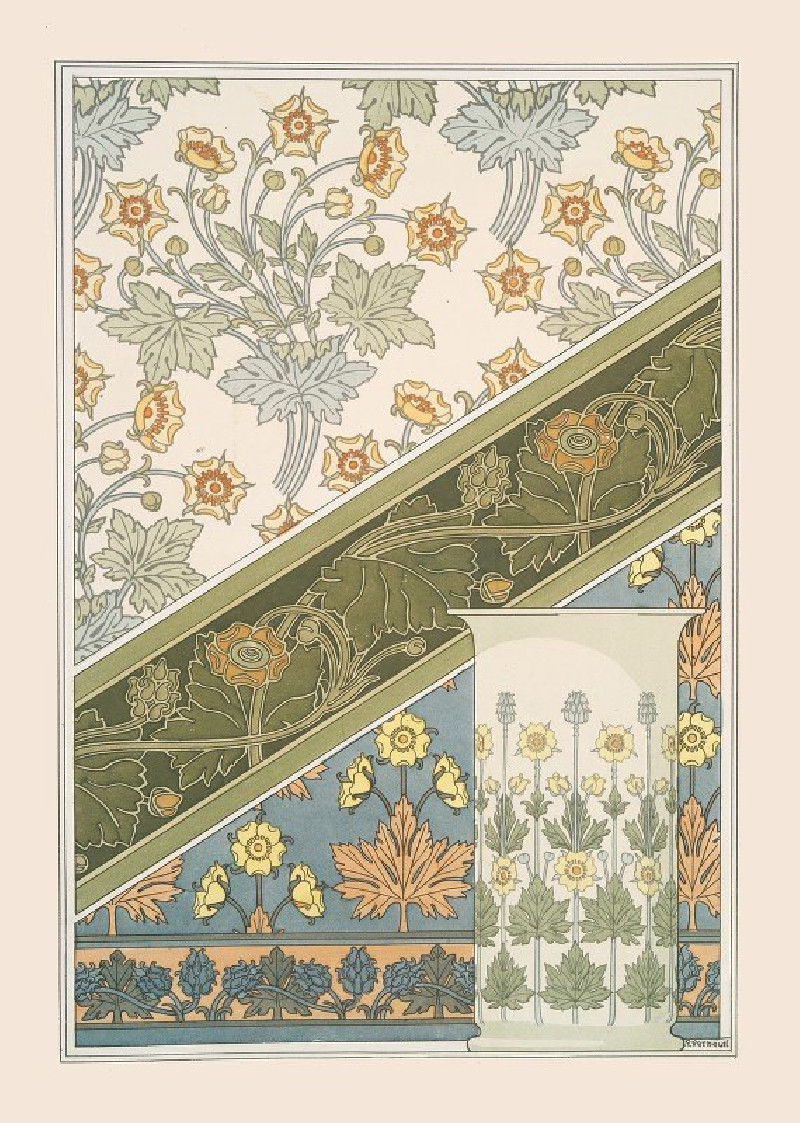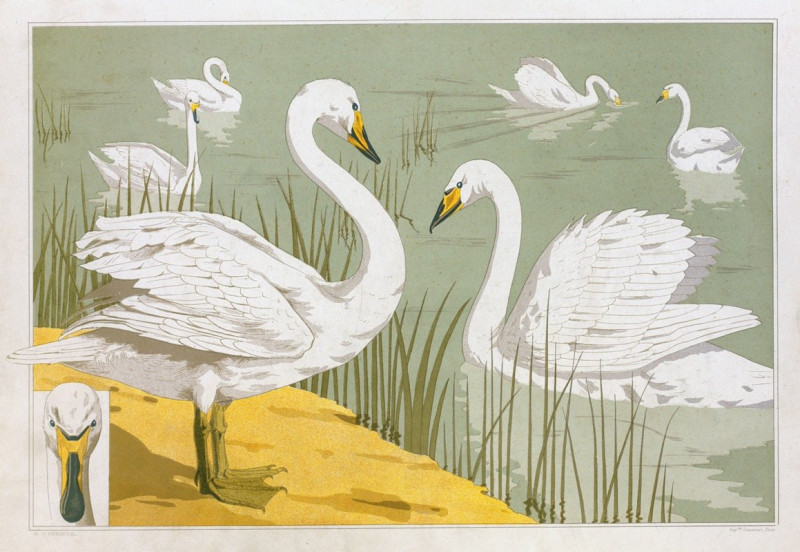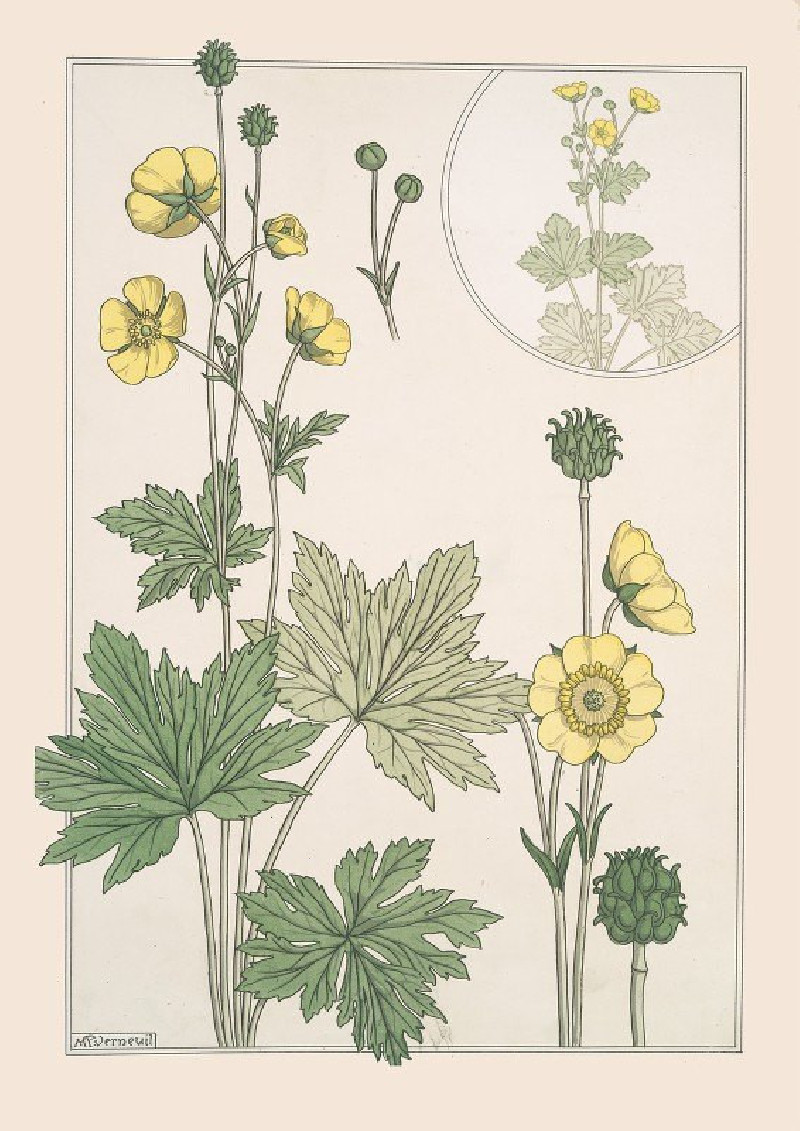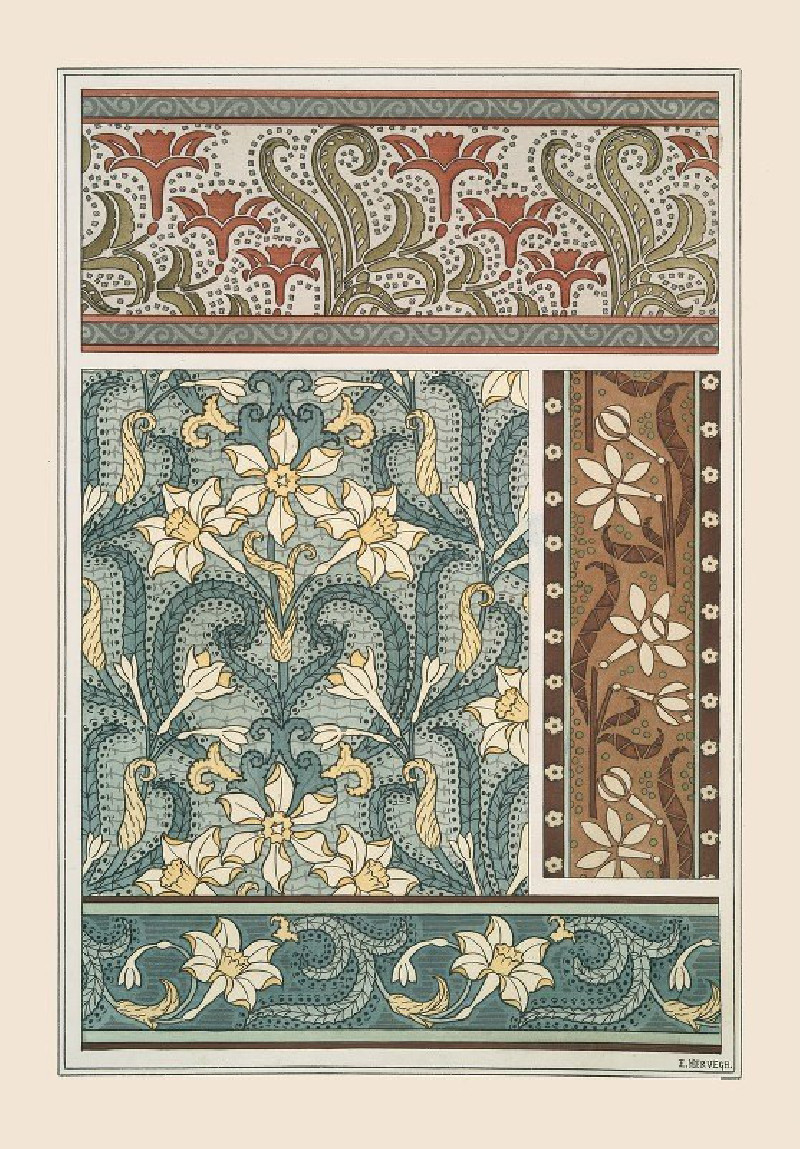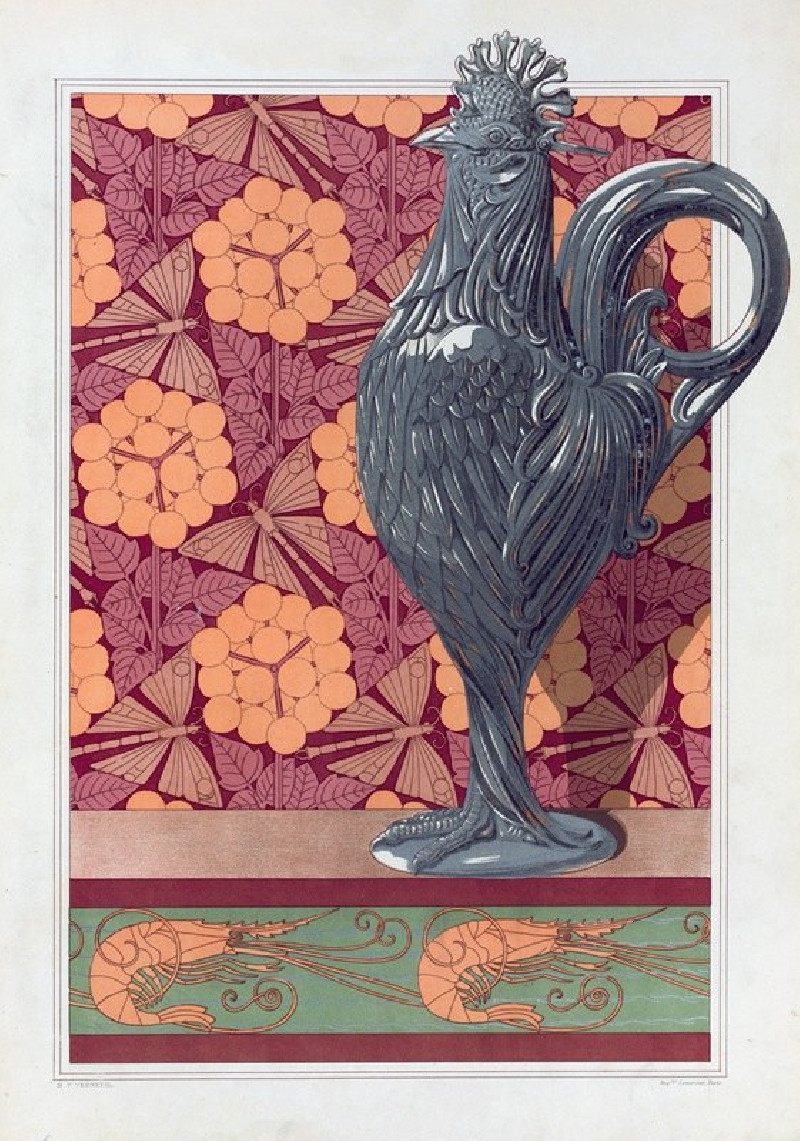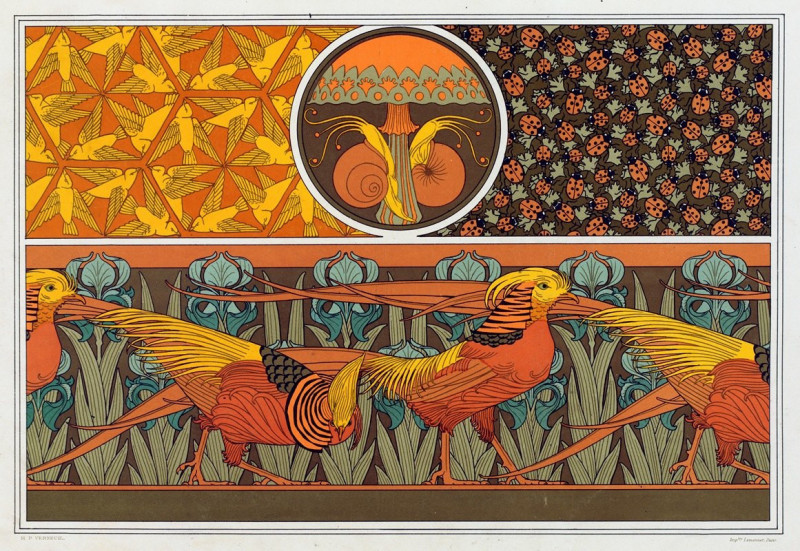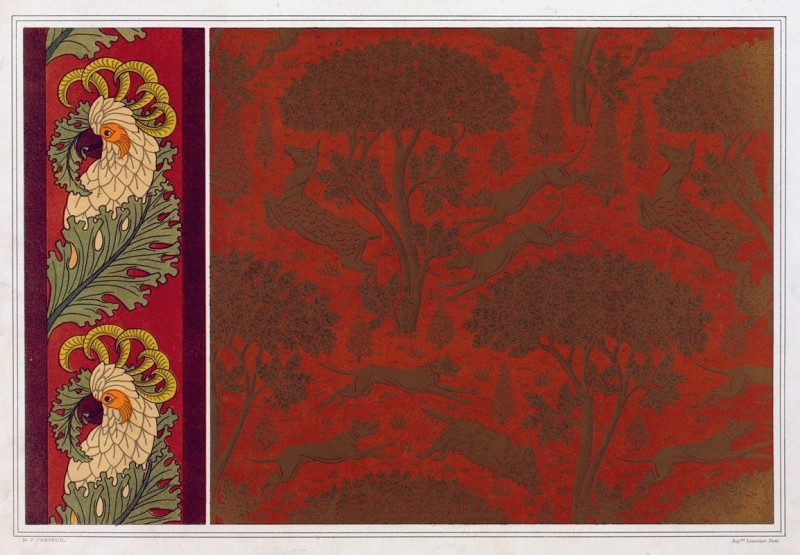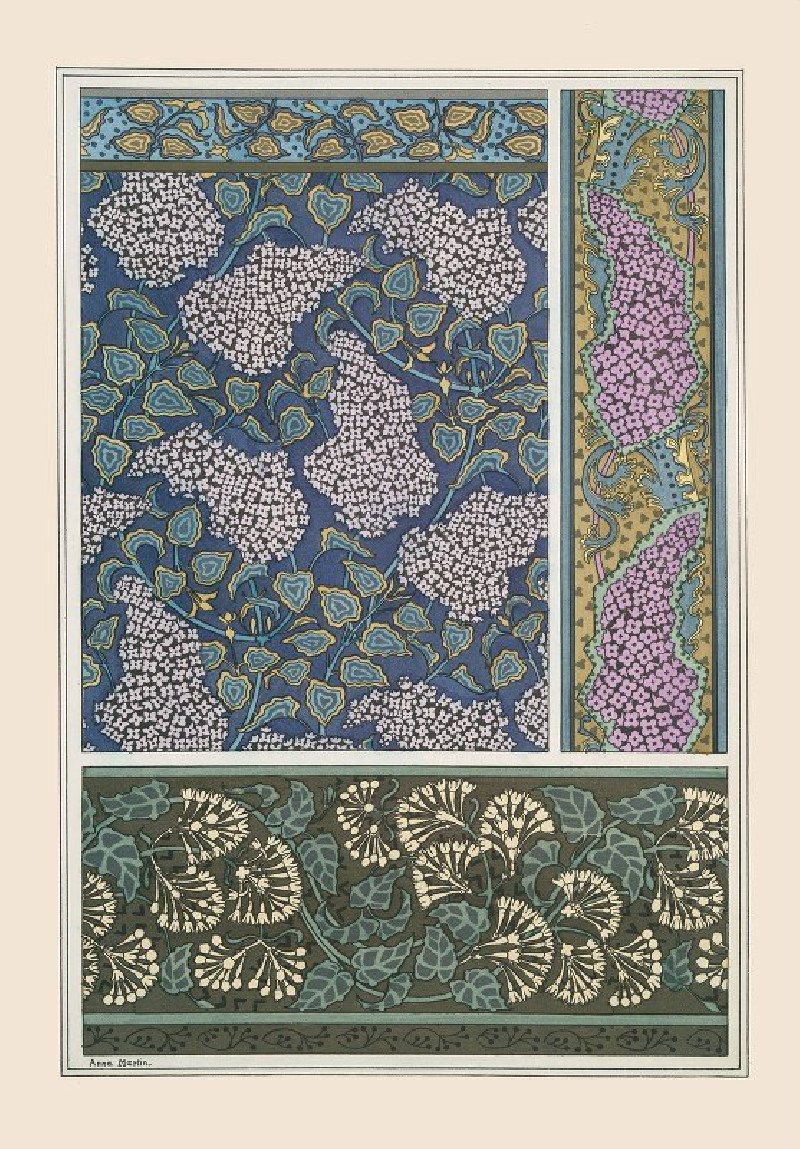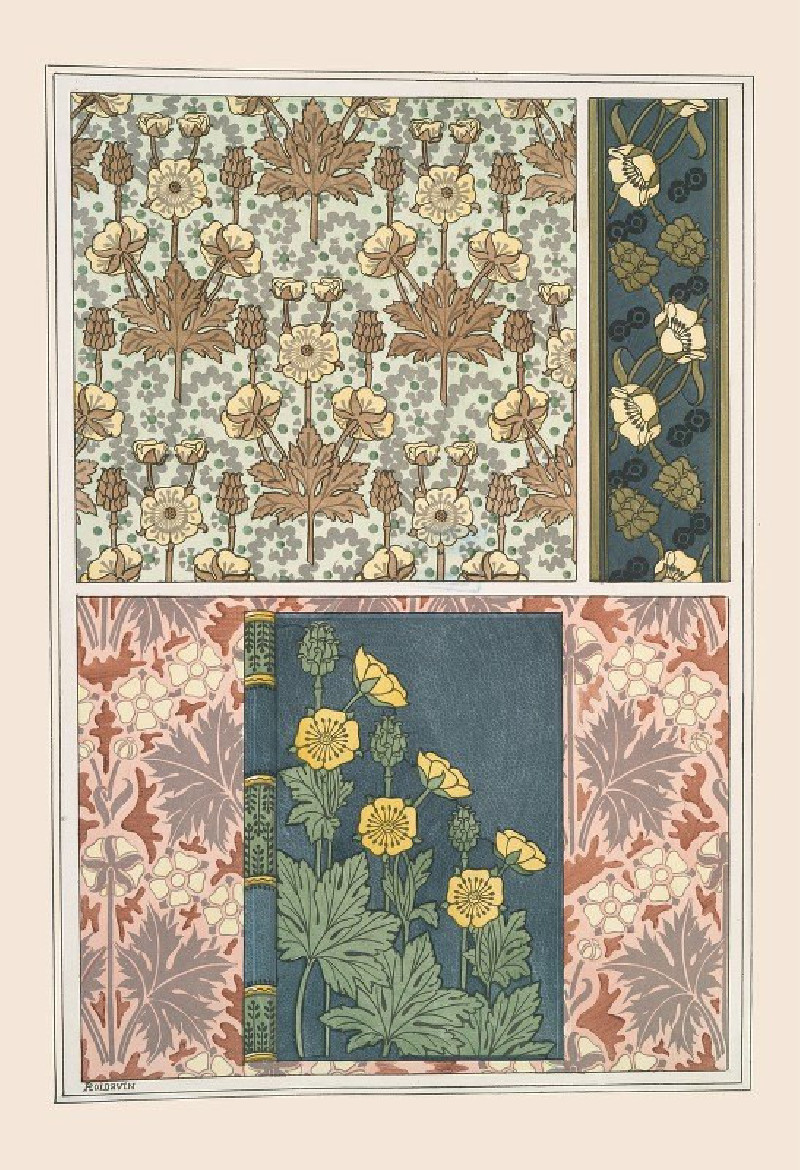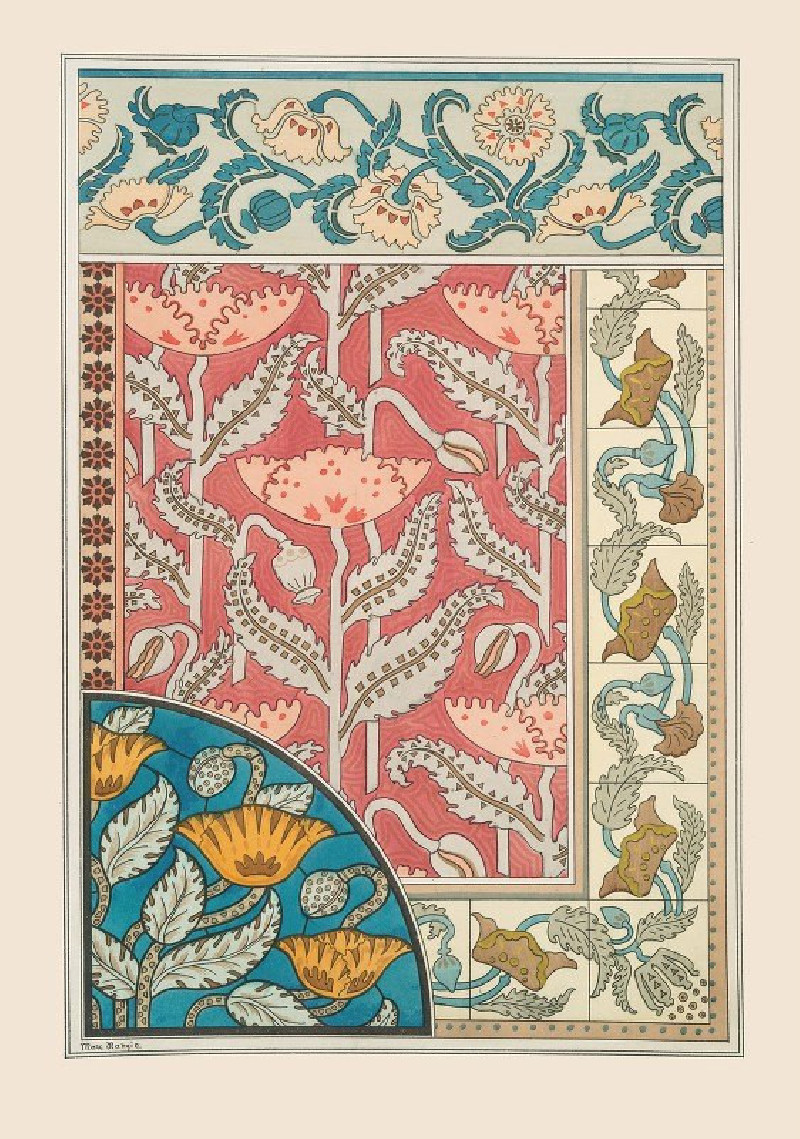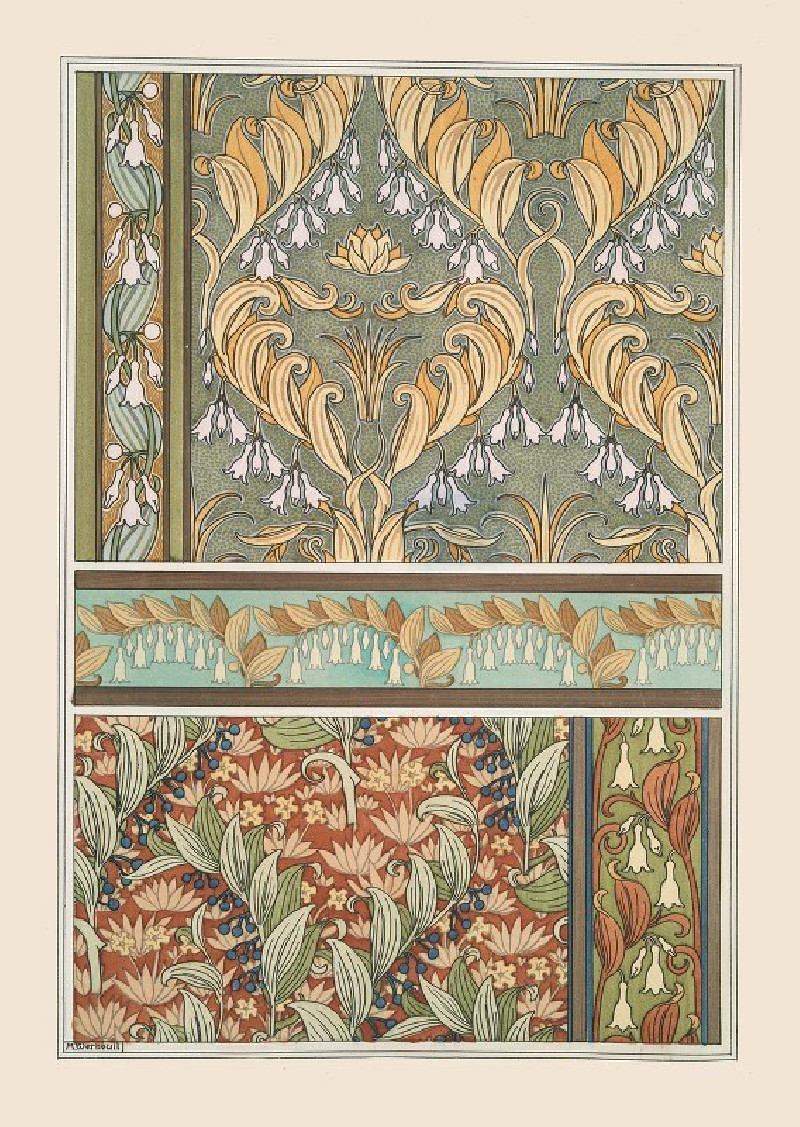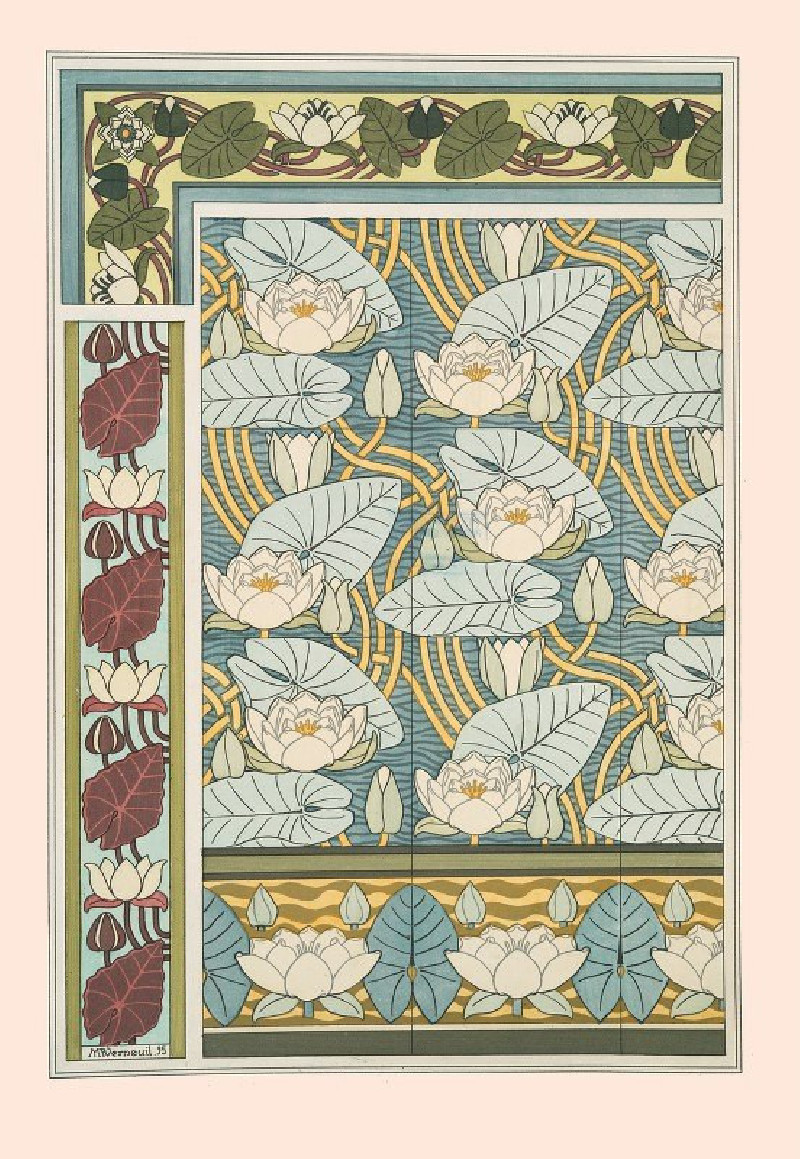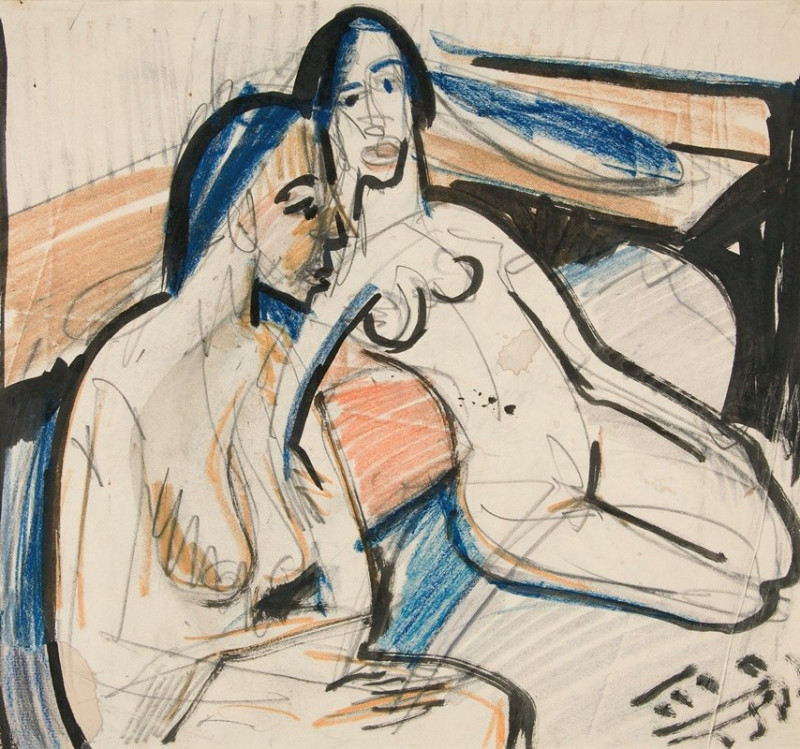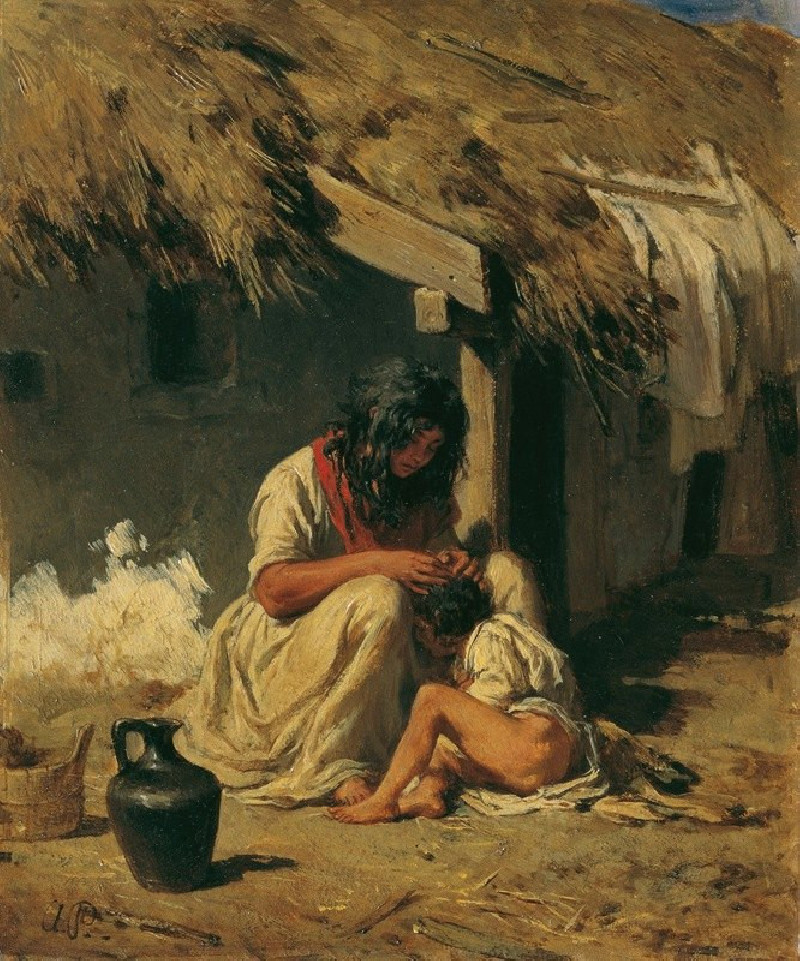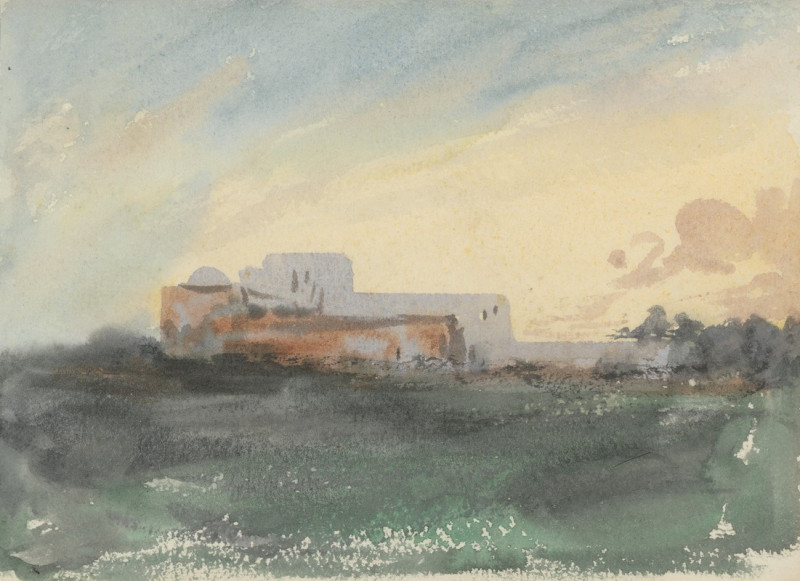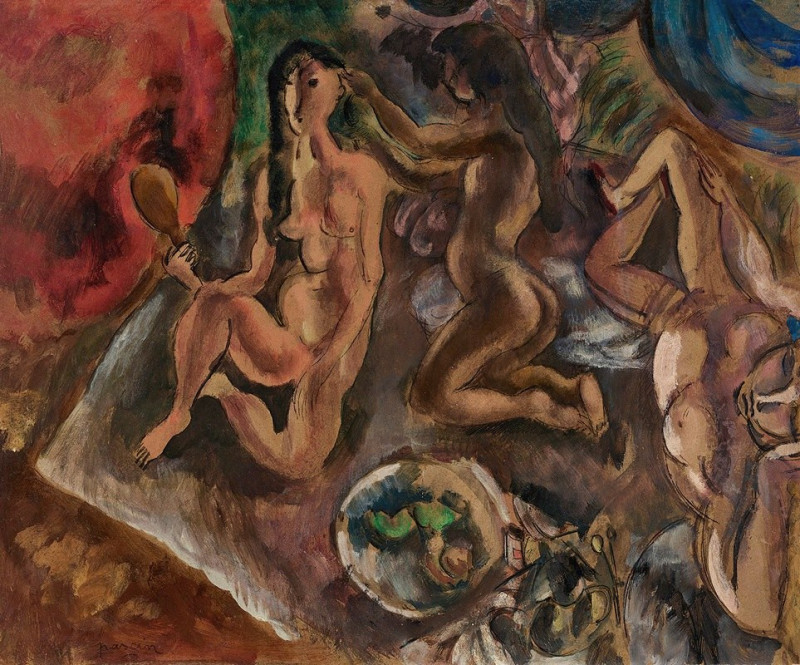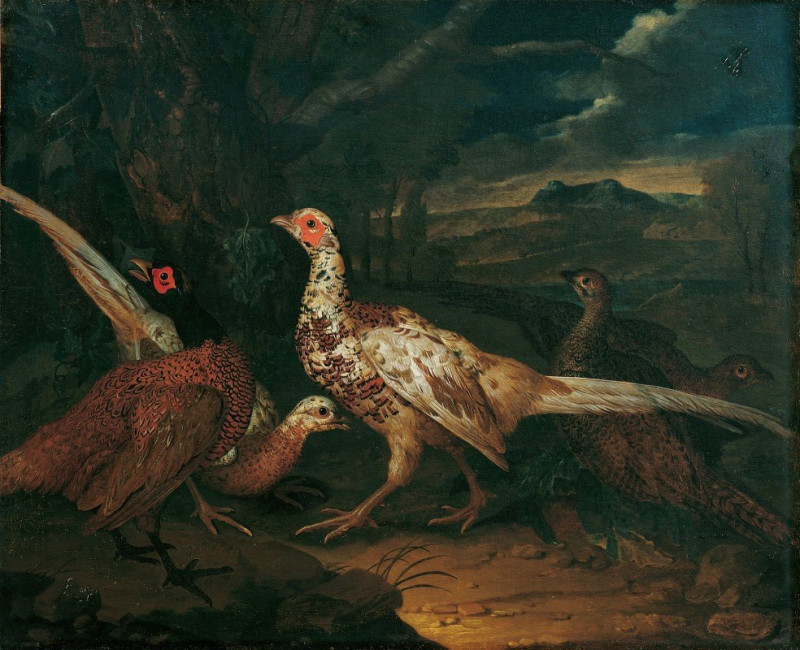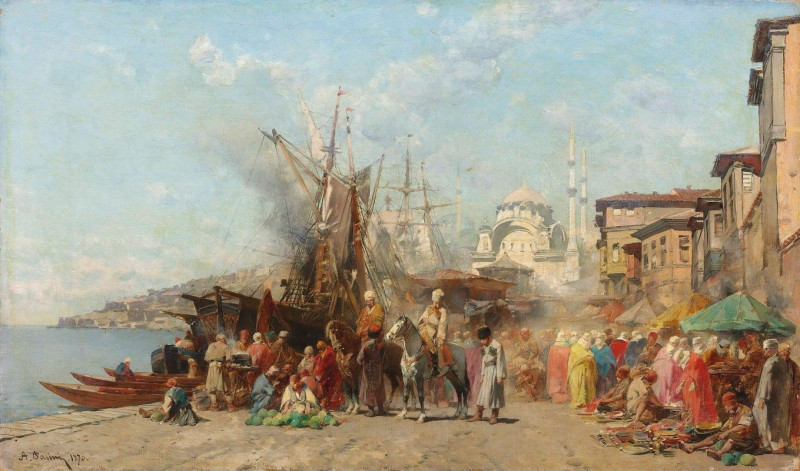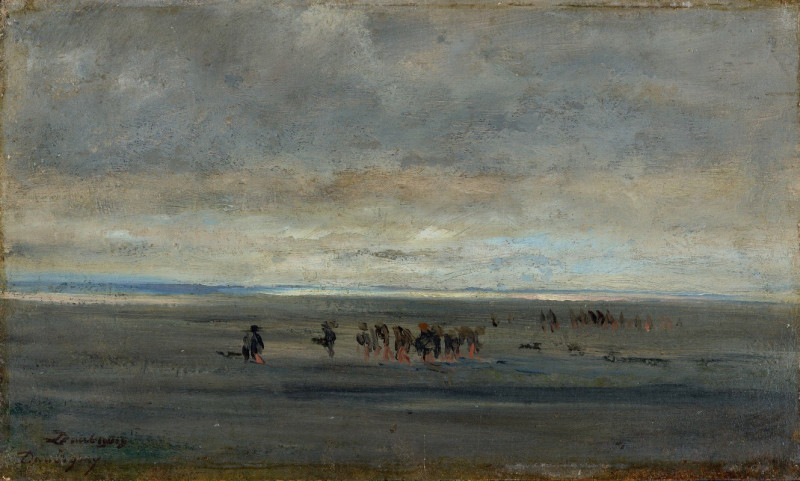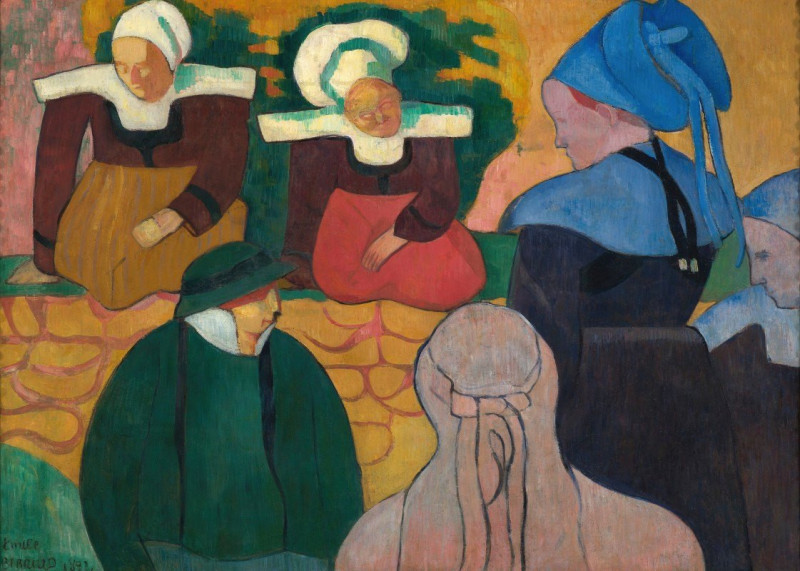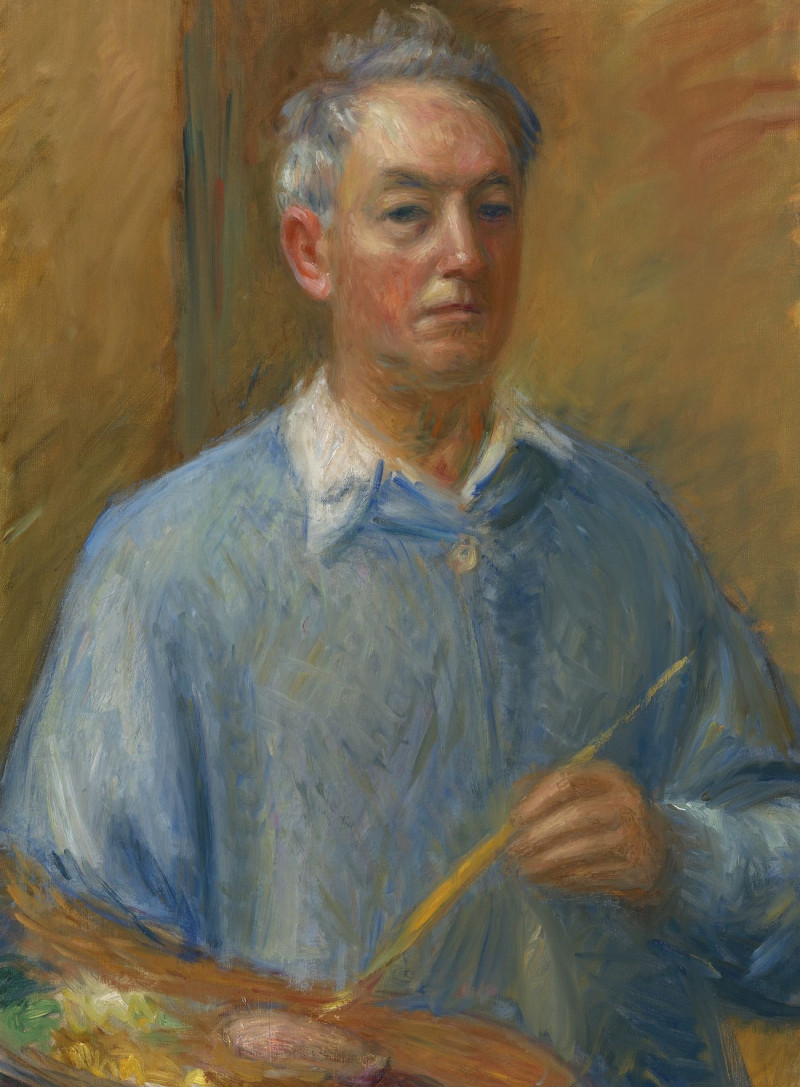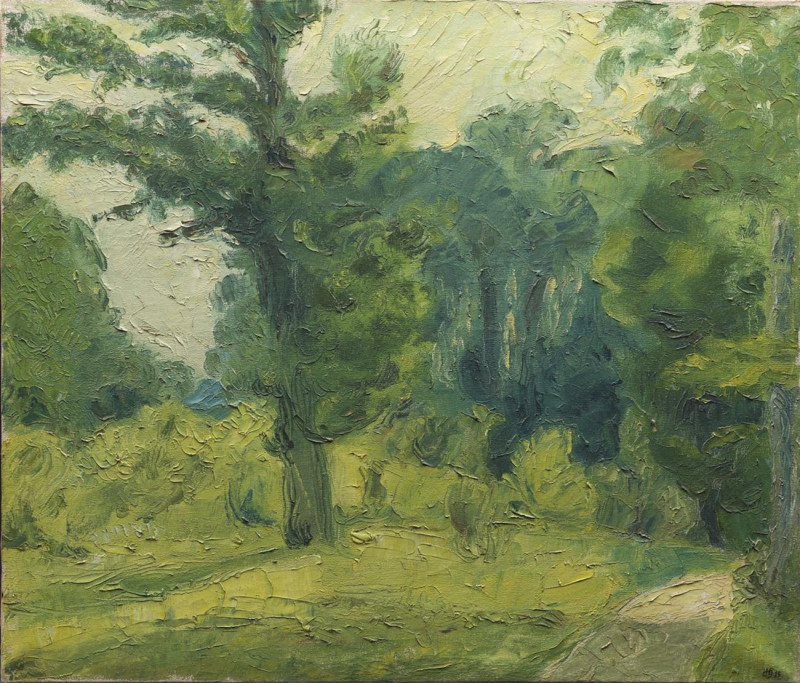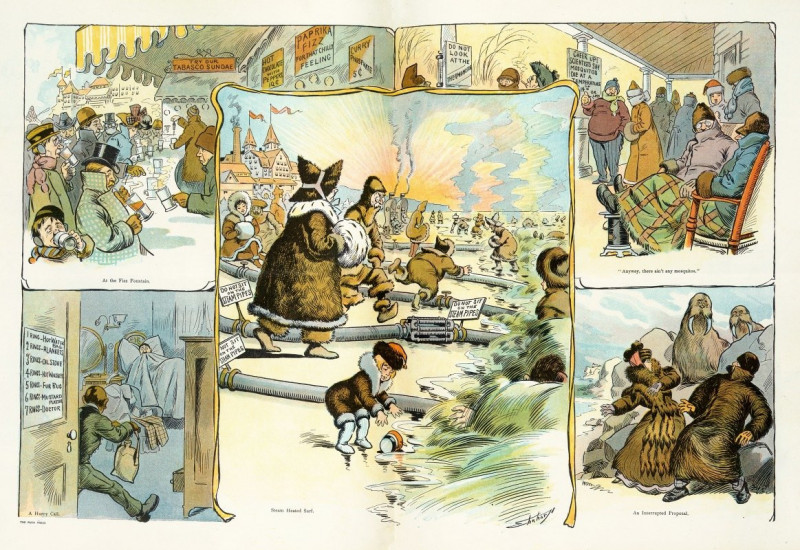Écureuil, oiseaux et noisetier, tenture. Chèvre et vigne, gobelet argent. Corbeaux et magnolia, tenture. (1897)
Technique: Giclée quality print
Recommended by our customers
More about this artwork
Delve into the vibrant and detailed world of Maurice Pillard Verneuil with his captivating 1897 artwork, "Écureuil, oiseaux et noisetier, tenture. Chèvre et vigne, gobelet argent. Corbeaux et magnolia, tenture." This remarkable lithograph is notable for its intricate design and the harmonious interplay of nature motifs, rendered through a distinctive Art Nouveau style.The composition is centered around a meticulously crafted silver goblet, intricately embellished with a relief of goats amidst vines, symbolizing fertility and abundance. This central element is flanked by two decorative panels, each illustrating a dense and colorful pattern of flora and fauna. To the left, one can observe a lively scene of squirrels, birds, and hazelnut trees, filled with movement and a rich palette of red and orange tones. This segment radiates a sense of vitality and the bustling energy of woodland life.On the right, the mood shifts with a portrayal of serene magnolias intertwined with majestic crows, set against a backdrop of bold red and purple hues. The magnolias suggest purity and dignity, while the crows add a touch of mystery and intelligence, together creating a balanced contrast to the lively left panel.Verneuil's composition not only displays his mastery of color and form but also reflects his deep appreciation for the natural world, capturing both its vibrancy and tranquility. This artwork invites viewers to explore the elegance of Art Nouveau and the seamless blend of natural elements with decorative arts.
Delivery
Returns
Maurice Pillard Verneuil was a French artist and decorator in the Art nouveau movement. He was born in Saint-Quentin, France. Maurice Pillard Verneuil learned his trade from the Swiss designer Eugène Grasset. Maurice Pillard Verneuil then went on to become a well-known artist and designer. He was inspired by Japanese art and nature, particularly the sea. He is known for his contribution to the art deco movement and, in particular, his use of bold, floral designs in ceramic tiles, wallpapers and other furnishing textiles.




